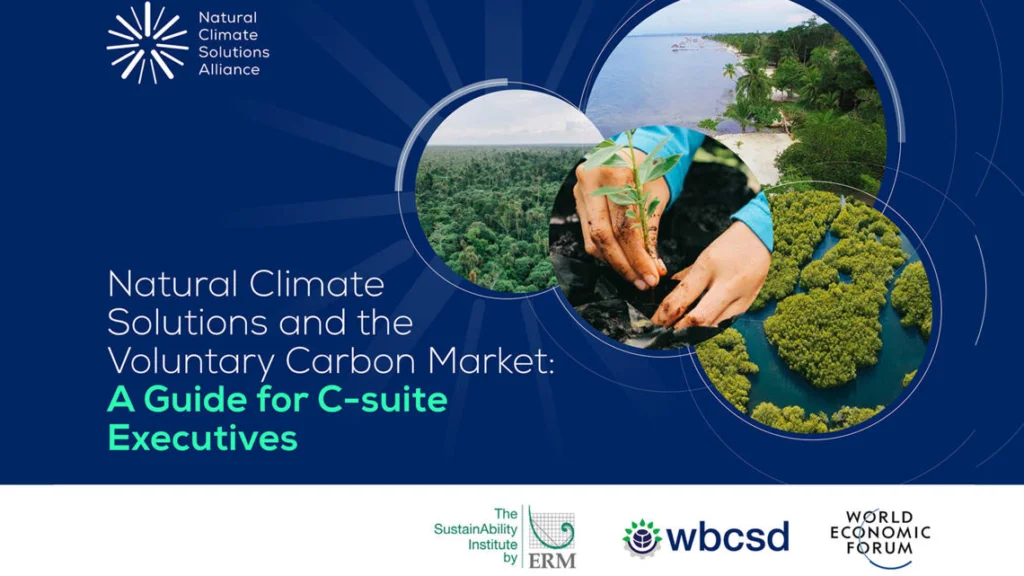Authors
Giulia Carbone, Director, Nature for Climate, WBCSD and Rick Saines, Managing Director, Pollination
Natural climate solutions (NCS) remain relatively untapped as an asset class especially for most large-scale traditional investors. As the business case and potential for financial returns are better demonstrated and understood, the opportunity to scale investment is strong.
As nature-based solutions (NbS) that address climate change, NCS hold the potential to provide roughly 30% of the emissions reductions needed to keep global warming as close to 1.5°C as possible by 2030. In addition to their carbon mitigation potential, NCS projects yield many other environmental, social and reputational benefits – each project offering its own unique risk and benefit profile for investors to consider.
Among the many reasons why companies and financial institutions should consider investing in NCS projects, these are the top five business cases:
1. Sourcing high-integrity, verified carbon credits at scale
Investing in NCS projects offers a way to enable a long-term and direct source of high-integrity, verified carbon credits at scale, enabling corporate investors to meet their climate and net zero goals and financial investors to align their investment portfolios with a low carbon future through investment in activities and holdings that reduce or remove emissions.
By providing finance at the project level, through carbon funds or to developers themselves, that fulfill high-integrity, high-quality requirements, investors can secure a direct source of high-integrity carbon credits. Making these investments prior to the issuance of credits can also benefit investors by affording more control over the project’s structure and activities.
With a direct source of carbon credits, investors can also reduce procurement costs and avoid the need to make spot purchases on the voluntary carbon market (VCM). This eliminates additional transaction costs associated with purchasing from a third party and mitigates the risk of higher credit prices in the future. In the event an investor does not retire for their own use all the credits they have secured, they can sell those remaining credits in the VCM, further mitigating overall costs to achieve reduction goals.
2. Capitalizing on carbon market growth
Between 2017 and 2022, the VCM grew more than tenfold, quadrupling in value between 2020 and 2022 alone. Though market growth slowed in 2023, experts expect growth to rebound over the long run. Much of this growth will be driven by increasing corporate climate ambitions and pressure to meet net zero targets. Expanding compliance markets may also drive growth with the expectation that more jurisdictions will implement compliance regimes that will recognize high-quality credits, including from NCS.
Convergence between compliance and voluntary markets is an observable trendwhich will help drive the investment and innovation needed for increased competition, better quality standards and greater innovation in overall carbon markets. Both financial and corporate investors will look to capitalize on future market growth, increasing demand for credits and carbon increasingly trading as a commodity.
3. Hedging against future increases in carbon prices
Hedging against an expected rise in carbon prices is another strong reason to invest in NCS. The cost of carbon is widely expected to continue to rise through mid-century. Adjusted for inflation, one forecast estimates the average market price per metric ton of CO2e to reach USD$27 by 2030 and USD$175 by 2050.
For corporates that depend on carbon credits to achieve their net zero commitments, especially once technically feasible and economically viable direct decarbonization options are exhausted, earlier project investments that lock in durable credit supply can be a key part of the overall strategy. For financial investors, the opportunity to invest early to lock in supply that can be monetized as forecasted prices increase over time, presents a compelling return potential.
4. Leveraging carbon, social and environmental benefits to improve reputation
Demand for carbon credits is often motivated by buyers’ perceived brand and reputational benefits. Companies can use carbon credits to meet robust climate policies in addition to satisfying a sense of responsibility for the role companies can play in broader social and environmental impact – particularly amid increasing stakeholder pressure.
NCS can help satisfy all these considerations for corporate investors given their multiple climate, social and biodiversity benefits. Similarly, for impact investors that prioritize investments that generate a measurable positive impact on communities and the environment while generating financial returns, high-integrity NCS projects offer attractive investments. NCS projects and programs often align with several of the UN’s 17 Sustainable Development Goals, providing investors with a widely recognized and respected framework to define the impact of their investments.
In order to ensure these reputational benefits, it is critical that NCS investments are made into high-integrity projects. In addition to helping to mitigate reputational risk, higher-integrity NCS projects can also improve project economics as credits from these projects sell at a premium in the VCM. At the end of 2023, credits rated as high-integrity, using scores based on Trove’s “Balanced” weighting factors on MSCI’s Carbon Markets platform, sold for nearly twice as much as medium and lower integrity credits. With buyers increasingly looking for high-integrity projects, these price differentials based on quality are likely to remain or strengthen over time.
5. Drawing benefits from additional revenue streams
In addition to selling carbon credits, NCS investors may earn additional non-carbon revenues from other commercial opportunities from project activities. Timber, crops, ecosystem services and land may all deliver additional revenue streams beyond the sale of carbon credits. For real asset strategies, owning land outright can give investors a greater level of control and security over the project and additional revenue streams compared to contractual agreements with landowners, communities and other stakeholders. And, real asset strategies are also often used as a hedge against inflation.
The potential from NCS awaits. For investors considering NCS, the first step should be to identify a business case that resonates most with their organization’s portfolio and investment strategy. The next steps for investors should include identifying the appropriate structure for their investment and mapping stakeholders, identifying key risks, applying due diligence through evaluating the integrity of NCS projects, determining a fair and equitable revenue sharing agreement and considering the legal implications of NCS investments by safeguarding rights and resources. This should be complemented by comprehensive data collection and disclosure to assess potential investments and review existing ones.
Let’s transform together. If you are interested in finding out more about NCS, you can reach out to Giulia Carbone, Director of Nature for Climate at WBCSD and the director of the NCSA, a platform supported by WBCSD and the World Economic Forum since October 2021. You can also reach out to Ben Cohen, Senior Manager of the Forest Investor Club (FIC), a network of public and private financial institutions, companies and investors committed to accelerating the deployment of capital into conservation, restoration and the sustainable management of forests and nature, launched by the U.S. Department of State, and led by WBCSD. You can also find out what Pollination, an FIC member, is doing in practice here.
Related
Content

Natural Climate Solutions Alliance (NCSA) recommends annual unabated emissions compensation for businesses
22 September, 2022
Global companies step up to scale investment in natural climate solutions
12 September, 2018

Exploring the landscape of conservation: An exclusive interview with Fauna & Flora’s Zoe Quiroz-Cullen on Natural Climate Solutions
30 April, 2024

